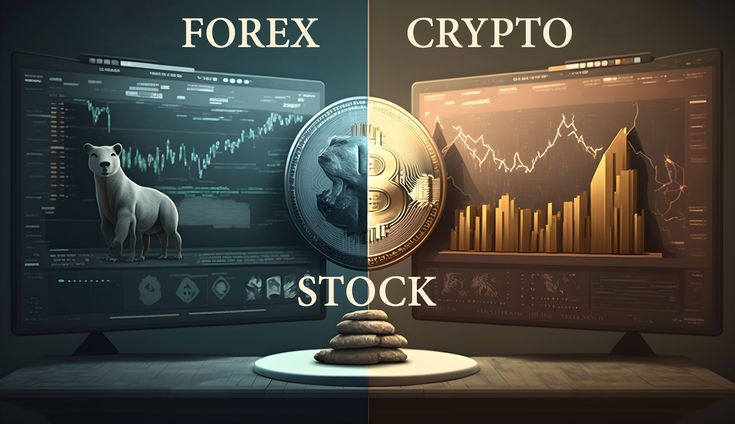Difference Between Trading and Investing – Explained for Beginners
Introduction
The financial world offers a wide range of opportunities for individuals to grow their wealth, and two of the most common methods are trading and investing. Although both involve buying and selling financial assets, they differ greatly in strategy, mindset, time commitment, and risk.
If you’re new to finance, understanding the difference between trading and investing is essential before deciding which path suits your financial goals. This guide breaks down the key differences in a simple, structured way to help you make informed decisions.
Definition of Trading
Trading refers to the act of buying and selling financial instruments—such as stocks, currencies, or commodities—with the goal of making short-term profits. Traders actively monitor the markets and make decisions based on price movements, technical indicators, and short-term trends.
The main focus in trading is timing—getting in and out of the market at the right moment.
Definition of Investing
Investing involves putting money into financial assets like stocks, bonds, or real estate with the intention of holding them for the long term—typically years or even decades. The goal is to build wealth over time through compounding, dividends, and capital appreciation.
Investors are less concerned with short-term fluctuations and more focused on the underlying value and growth potential of the asset.
Key Differences Between Trading and Investing
Let’s compare the two approaches across several important factors.
1. Time Horizon
- Trading: Short-term (minutes to weeks)
- Investing: Long-term (months to years)
Traders aim to profit from quick price changes, while investors hold assets for sustained growth.
2. Frequency of Transactions
- Trading: High frequency (daily or weekly trades)
- Investing: Low frequency (buy and hold)
Traders are active participants, often entering and exiting multiple positions in a short time.
3. Risk and Volatility
- Trading: High risk due to market volatility and leverage
- Investing: Generally lower risk over time, but still subject to market cycles
Traders are more exposed to sudden market moves. Investors rely on long-term market trends to reduce short-term risk.
4. Approach and Tools
- Trading: Uses technical analysis (charts, indicators, price action)
- Investing: Uses fundamental analysis (financial reports, earnings, macroeconomic trends)
Traders focus on price patterns. Investors look at company performance and market fundamentals.
5. Mindset and Psychology
- Trading: Requires quick decision-making, emotional control, and discipline under pressure
- Investing: Requires patience, long-term thinking, and the ability to ignore short-term noise
Psychological discipline is critical in both methods, but in different ways.
Pros and Cons of Trading
Pros:
- Potential for fast profits
- More control over positions
- Flexible schedule
- Opportunities in both rising and falling markets
Cons:
- High risk, especially with leverage
- Emotion-driven mistakes
- Requires constant attention and fast reactions
- Short-term market noise can mislead
Pros and Cons of Investing
Pros:
- Compound growth over time
- Less time-consuming
- Lower transaction costs
- Historical upward trend in stock markets
Cons:
- Slower returns
- Long-term commitment
- Vulnerable to market crashes
- Requires patience and emotional strength
Which Is Better for You?
The choice between trading and investing depends on your personal goals, time availability, capital, and risk tolerance.
You might prefer trading if:
- You enjoy active decision-making
- You have time to study markets daily
- You’re comfortable with higher risk
- You want faster results
You might prefer investing if:
- You’re planning for retirement or long-term goals
- You prefer passive wealth-building
- You want to reduce daily involvement
- You can tolerate market dips
Some people even combine both approaches: they invest for the long term while actively trading a small portion of their capital.
Real-Life Example
Imagine you believe a company’s stock (XYZ Inc.) is undervalued.
- As an investor, you buy shares and hold them for 5–10 years, expecting the company to grow and the stock to rise in value. You may also receive dividends along the way.
- As a trader, you might look at the stock’s price chart and decide to buy today and sell within days or weeks if a short-term breakout occurs.
Both approaches involve the same asset but serve very different purposes.
Tax Considerations
Tax treatment often varies between trading and investing. In many countries:
- Short-term trading profits are taxed at a higher rate.
- Long-term capital gains (from investing) may be taxed lower.
- Frequent trading can also result in more complex tax filings.
Always consult with a tax advisor for accurate information based on your location.
Conclusion
Trading and investing are both valid paths to financial success, but they require different skill sets, mindsets, and strategies. Understanding the differences helps you avoid confusion and build a clearer financial plan.
If you’re a beginner, you might start by learning both. Practice trading on a demo account while building a long-term investment portfolio. Over time, you’ll discover what suits your goals, personality, and risk tolerance best.
The key is to stay educated, manage risk, and make consistent, informed decisions—whether you choose trading, investing, or a mix of both.


